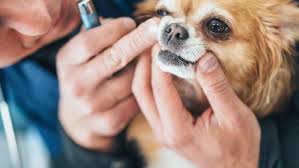Introduction
Pet insurance has become an essential financial tool for pet owners looking to protect themselves from the rising cost of veterinary care. In 2025, the pet insurance industry has continued to grow in sophistication, offering coverage for a wide range of conditions, treatments, and even wellness benefits. However, not everything is covered. Understanding the limitations and exclusions of pet insurance is just as important as knowing what’s included.
This article explores what pet insurance typically does not cover in 2025, helping pet owners make informed decisions, avoid unexpected costs, and choose the right plan for their furry family members.
Overview: How Pet Insurance Works
Before diving into exclusions, it’s helpful to understand how pet insurance generally works:
-
Reimbursement Model: You pay the vet bill upfront and get reimbursed later.
-
Deductibles and Copays: Plans typically include an annual deductible and a percentage-based copay.
-
Coverage Types: Plans range from accident-only, accident & illness, to wellness add-ons.
-
Premiums vary based on your pet’s age, breed, location, and the coverage level you choose.
Now let’s look at what most pet insurance plans exclude, even in 2025.
1. Pre-Existing Conditions
The most common exclusion across all pet insurance providers is pre-existing conditions—illnesses or injuries your pet showed symptoms of before enrollment or during the waiting period.
Examples:
-
If your dog was limping before you got insurance, treatment for that condition will be excluded.
-
If your cat had a history of vomiting, any gastrointestinal issues may not be covered.
Some providers distinguish between:
-
Curable vs. Incurable pre-existing conditions.
-
Curable conditions (like ear infections) may be covered again if symptom-free for 6–12 months.
-
Incurable conditions (like diabetes or cancer) are typically excluded for life.
-
2. Routine and Preventive Care (Unless Add-On)
Basic pet insurance does not cover routine care unless you purchase a wellness plan as an add-on.
Exclusions may include:
-
Annual exams
-
Vaccinations
-
Flea/tick and heartworm prevention
-
Teeth cleaning
-
Nail trimming
-
Deworming
In 2025, many companies (like Embrace, Spot, and Lemonade) offer separate wellness packages, but they cost extra.

3. Elective and Cosmetic Procedures
Procedures that are not medically necessary are usually excluded. This includes:
-
Ear cropping
-
Tail docking
-
Declawing
-
Dental cleaning (unless due to illness/injury)
-
Nail caps or cosmetic surgery
These are considered aesthetic or behavioral choices, not essential to your pet’s health.
4. Breeding, Pregnancy, and Birth
Most pet insurance plans do not cover breeding-related costs, such as:
-
Artificial insemination
-
Pregnancy checkups
-
Labor and delivery
-
Cesarean sections
-
Postnatal care for puppies or kittens
These exclusions apply even if the pet develops complications during labor.
5. Behavioral Issues (Unless Specifically Included)
Some behavioral treatments are excluded unless your policy explicitly states they’re covered.
Typically excluded:
-
Aggression training
-
Separation anxiety therapy
-
Obedience school
-
Behavioral medication
A few insurers—like Healthy Paws and Trupanion—may cover behavioral care if it’s prescribed by a veterinarian or a certified behaviorist, but you must check the fine print.
6. Alternative or Holistic Therapies
Coverage for alternative treatments like acupuncture, chiropractic care, and herbal supplements varies widely.
Most plans exclude them, but some 2025 plans offer them as optional add-ons or under comprehensive policies.
Treatments often excluded include:
-
Reiki
-
Homeopathy
-
CBD oil
-
Aromatherapy
-
Energy healing
7. Experimental Treatments or Clinical Trials
Most pet insurance policies do not cover treatments that are not widely accepted by the veterinary community or are considered experimental.
Exclusions often include:
-
Stem cell therapy
-
Gene therapy
-
Unapproved drugs or devices
-
Participation in clinical trials
Even in 2025, insurers stick to evidence-based veterinary medicine for coverage approval.
8. Injuries Caused by Owner Negligence or Abuse
If an injury or illness is caused by intentional harm or neglect, the policy becomes void, and claims are denied.
Examples:
-
Starvation or malnutrition
-
Injuries from illegal dog fights
-
Accidents due to being left in a hot car
In many cases, the insurer may terminate the policy if abuse is suspected.
9. Conditions During Waiting Period
All pet insurance policies include a waiting period—the time between enrollment and when coverage begins. Any illness or injury diagnosed during this period is automatically excluded as a pre-existing condition.
Typical waiting periods in 2025:
-
2–15 days for accidents
-
14–30 days for illnesses
-
6–12 months for orthopedic issues in dogs (like ACL tears)
10. Specific Breed-Related Exclusions
Certain breeds are prone to hereditary conditions like hip dysplasia, heart disease, or respiratory issues. Some insurers in 2025 exclude these conditions entirely for high-risk breeds.
Examples:
-
Bulldogs: breathing problems (BOAS)
-
Dachshunds: intervertebral disc disease
-
German Shepherds: hip dysplasia
-
Persian cats: polycystic kidney disease
Make sure your insurer covers hereditary and congenital conditions if your pet’s breed is at risk.
11. Supplementary Items and Non-Medical Costs
Most pet insurance does not cover the following:
-
Pet food (even prescription diets)
-
Dietary supplements
-
Vitamins
-
Pet boarding and grooming
-
Pet transportation or travel costs
-
Lost pet recovery fees
Some therapeutic diets may be covered if prescribed for a covered illness, but only a few companies include this.
12. End-of-Life Services (Partial Coverage Only)
Some insurers cover euthanasia and cremation, while others limit coverage or exclude it entirely.
In 2025:
-
Euthanasia is covered by about 60% of standard plans
-
Burial or cremation often requires a wellness rider or may only be partially reimbursed
-
Grief counseling is not covered by most insurers

Conclusion
In 2025, pet insurance remains a valuable tool for managing unexpected veterinary expenses, but it is not all-inclusive. Understanding what your policy does not cover can prevent surprise bills and frustration when your pet needs care.
Before enrolling in a policy:
-
Read the fine print and policy exclusions
-
Know your pet’s medical history
-
Choose a plan that fits your budget and coverage needs
-
Consider add-ons like wellness or hereditary condition riders if needed
Being proactive helps you choose smart, transparent, and protective coverage for your beloved companion.







Daily serial upload please